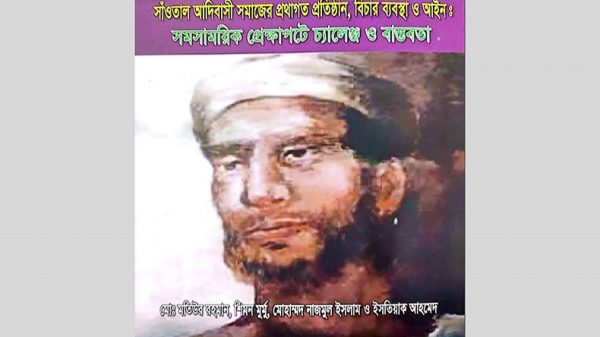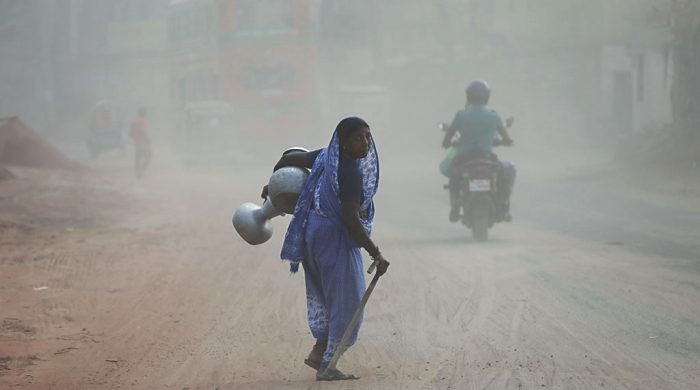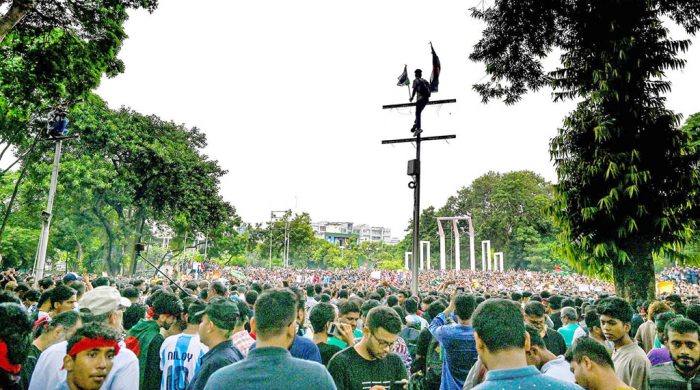Challenges of approaching Santal governance system

- Update Time : Tuesday, September 13, 2022
- 87 Time View

MD MOTIUR Rahman and his research team deserve accolades for their work, ‘Customary Institutions, Judiciary Structure and the Laws of Santal: Contemporary Challenge and Reality’. A book published by the Research Initiative Bangladesh is worth mentioning for its bold attempt to add something substantial to the existing literature on the indigenous communities in Bangladesh. This is by no means an easy task and to an extent errors can be excused and authors should be congratulated on their declared resolution to ‘write what is yet to be written’. However, the business of advocating for the unceasingly tormented ‘indigenous’ is a risky one, and it must receive critical scholarly attention too. The research and the ensuing book is part of a Community Legal Services project which attempted to document Santal customary laws.
The book is divided into three major sections — the socio-political structure and institutions of the Santal society located in the north-west of Bangladesh, the existing local judiciary system and an elaborate description of some of the customary laws. But before delving into the structures of the judiciary system, the laws and the nitty-gritty, the researchers attempted to give a short description of the ‘origin’ and the history of the laws and the customary institutions from the native’s perspective in a ritualistic manner. Then it moved on to descriptive accounts of the roles of the local chiefs and administrators of the law. In the main body of the book, there are elaborate elucidations on the aforementioned three sections, followed by the researchers’ take on the current condition of the legal arrangement and deviations from it in practice.
Although the title suggests an extensive focus on contemporary issues faced by the Santal community, there’s not much dwelling in that area. Even in brevity what is discussed is a bit vague, there’s mention of some kind of ‘outside force’ (page 11), ‘intermediary agents’ who are also apparently ‘outsiders’ (page 32) and slight hinting towards what seems like interpenetrative exchanges between state governance and local governance. But none of this is discussed with any specificity or detail. It is mentioned in the book that Manjohi Parisad (the lowest form of local court of the Santal) chief or Manjohi Haram maintains a form of relationship with the state government and development organisations (page 22, 57), however this relationship is not explored further in the book. Rather a form of binary opposition is portrayed between the Manjohi and the state police and judiciary system throughout the literature. There’s also mention of public hesitance related to the credibility of Manjohi haram and allegations of corruption yet no deliberate attempt to explore those by the researchers.
Surprisingly, a much more ponderous approach is taken towards extinct code of conduct and punishments, such as ‘bitlaha’ where public defecation and nude dancing are involved. According to their own respondents, bitlaha has not taken place for the last 10-15 years yet it is extensively discussed. In contrast, the current local taxation system (page 24) is merely mentioned and not given a second glance. So no deduction can be made about who is taxed, what’s the amount, how the fund is used and what is the general pulse of the people about the process etc. The same can be said about the representation of the monetary punishments which are also quite common (page 29). Twenty-one pages (page 33-52) in a roughly 50 page book, however, were spared for the sake of marriage laws, harassment laws, sexuality, kinship laws, mostly matters of the heart, three and a half pages covered the rest and even there non-specificity persisted regarding inheritance laws and else.
Now it may seem too skeptical on my part to question the disproportionate nature of the different sections and raise an eyebrow towards what is uttered and not uttered, but my reason for doing such is that one of the main objectives of this literature as cited in the book itself (page 15) is to provide some form of a ‘written guide/constitution’ for the Santal community to conduct future Shalish sessions (!). The rationalisation behind this quite valiant attempt is done by the claim that this is the first textually documented form of Santal customary laws (page 15, 16). This claim is simply untrue as there has been multiple publications on the said topic in the past, famous examples of which are ‘Santal Customary Law: An Anthropological Perspective’ by Amit Soni (2000) and ‘Tribal Law and Justice: A report on the Santal’ by W G Archer (1984). From the literature review, it is apparent that the authors did not make much effort to take up that literature with any seriousness.
In the preface, it is claimed that the ‘Santal leaders’ also felt a need for written documentation of the customary laws so that they don’t go extinct for the generations to come who seem to be drifting away from the local governance system. It is difficult for me to refute this statement entirely without on-site reinvestigation of the population; however the selection of the participants and the methods used can be questioned. Key informant interviews were conducted amongst 12 participants, all of whom are directly related to the Shalish system and are active members of the Manjahi Parisad (page 16). In-depth interviews were conducted only with 10 Manjahi chiefs and 10 elderly members of the society. The same dynamic duo seemed to be the informants in the questionnaire section (42 leaders and 12 elders). Only in the Focus Group Discussions there seemed to be a trend of general participation and a mention of gender diversification, although age based diversity is not mentioned. When clearly an aversion towards the local customary beliefs and laws from the young sect of the community is touched upon by the researchers and an attempt to revert that is claimed as an objective, this informant selection may seem arbitrary to say the least.
My curiosity about why the aversion even took place in the first place and is it increasing by the day was also not quenched. However, I do understand that it is difficult to make conjectural statements about cultural trends and what caused them so. A lack of analytical discussion therefore can be seen sparingly. However, what can’t be spared is an attempt at projecting a form of state-nation structure on Santal institutions in order to ‘decode’ it. For example, in page 25 when the Santal judiciary system is discussed, all the institutions are directly compared to nation-state jurisprudence: Manjohi Shalish as primary court, Adepashe Manjohi shalish as secondary court, Union Pargana as appeal division, Lobyr Darbar (Dihiri Bichar) as Supreme Court. The word ‘remand’ is used without any hesitation when describing Santal judiciary defendant questioning methods. Even in the glossary the words ‘eve-teasing’ and ‘loss of honour’ are used interchangeably to translate ti gaduj, however they have been differentiated from ‘sexual abuse and harassment’ without any proper explanation, the latter two have been portrayed as translation from Majiu tuluch jorkatech hormo relation. How they made this distinction and whether they actually mean the same thing in both jurisprudence is undoubtedly intriguing.
The origin of Pargana and Disham Pargana also lacks clarity. In one place it is stated that a fraction of the interviewed group claimed that the Disham Pargana was a later addition (page 20). However, there is no specificity on when and under what circumstances these institutions were found. But here deliberation on distinctive pretext is crucial because the practicing parameters of the Pargana is claimed to be the same as a ‘union’ and the Disham Paragana as the ‘area or anchal’. These local governance categories came with the British colonial ruling of Bengal and how (or if) they penetrated the Santal local governance and customs should be of interest to any law/social science researcher, especially one who wants to re-establish ideas of traditional indigenous law and order. But since there is not even any shallow diving here, an assumption can be made that either this was just another projection of ‘like ours, like yours’, or the interpenetrative nature of rulers and their rules on the indigenous culture is taken for granted here.
This form of literature about indigenous groups is often produced due to preconceived uncomplicated notions about ‘us and them’. The ‘Homogenous cohesive simple ethnic group’ (page 18) is one of the many phrases used to describe an encapsulated-in-time Santal community which is much more likely to be a non-indigenous fantasy. It is high time that a deconstruction of such conceptions in the Bangladeshi research community took place or else whatever is produced will be of no use to who it is produced for.
Adrita Kabir studies anthropology at Jahangirnagar University.



















